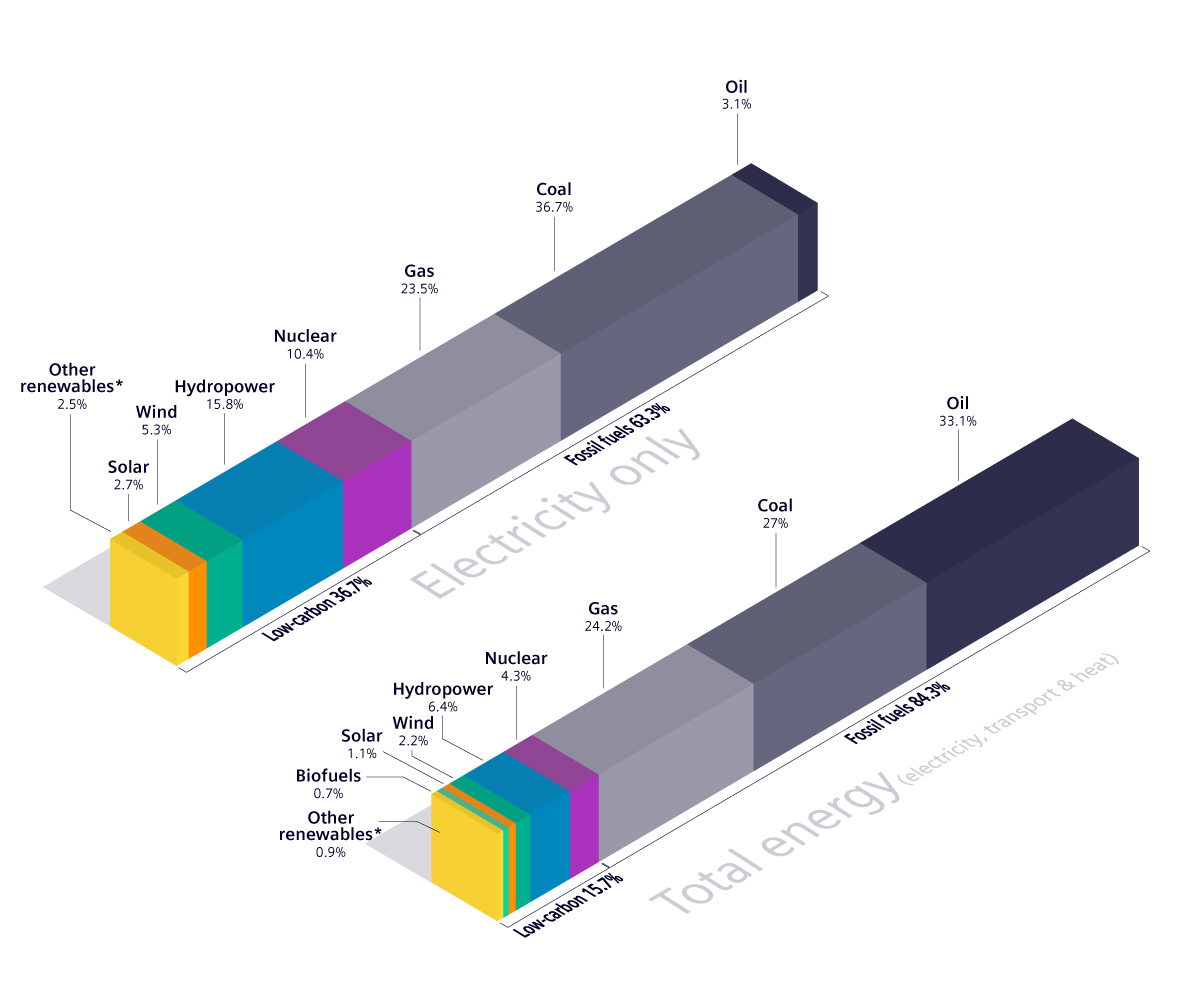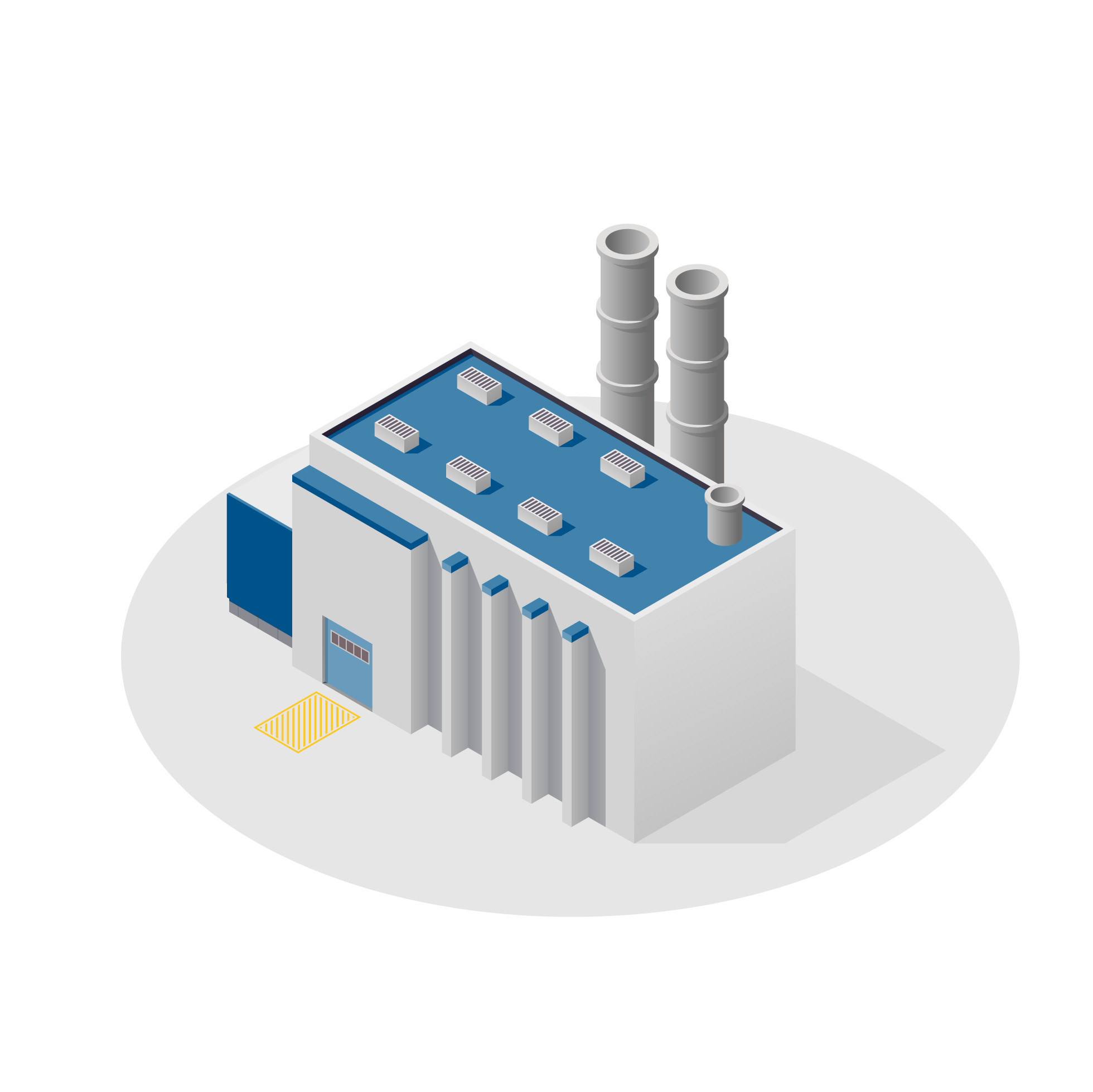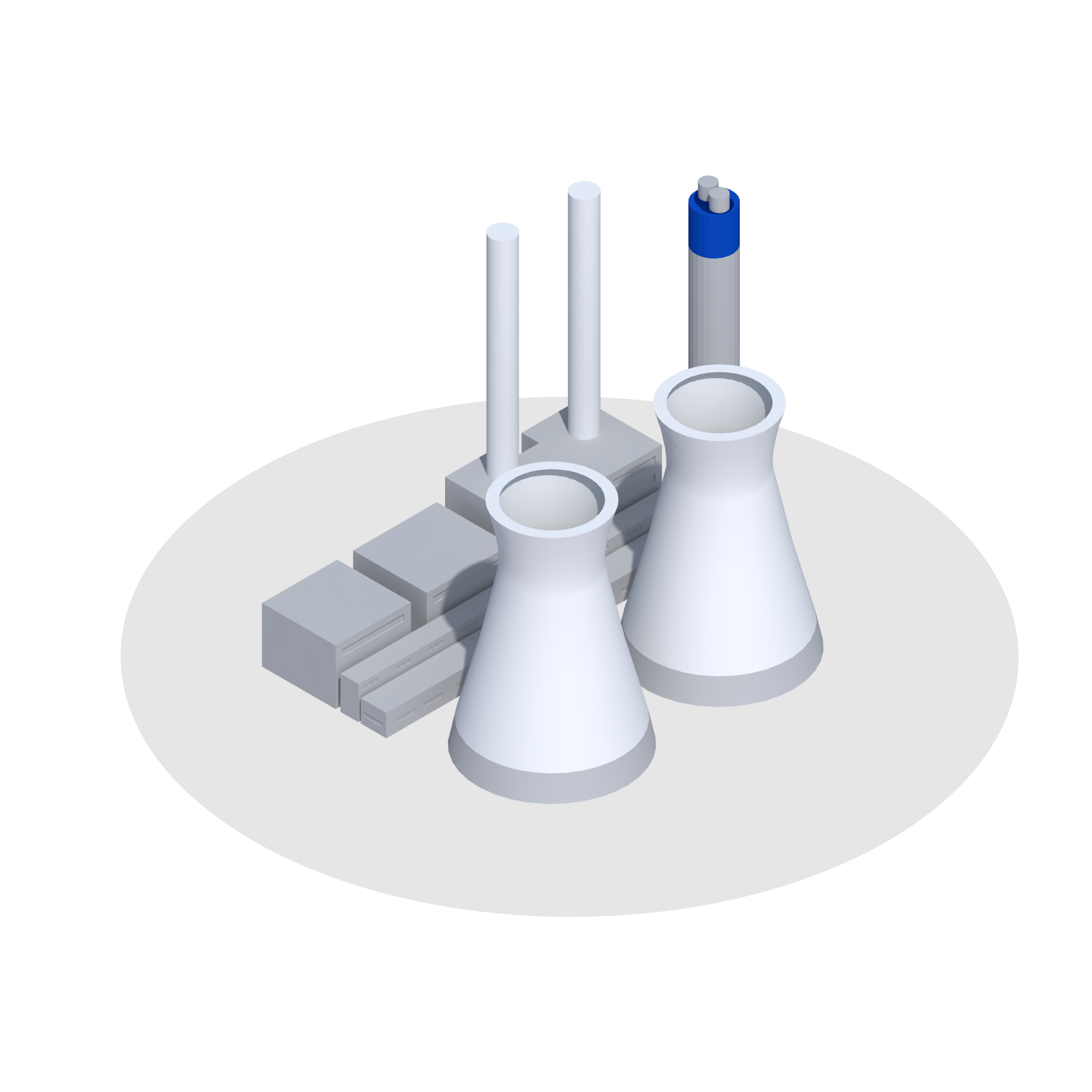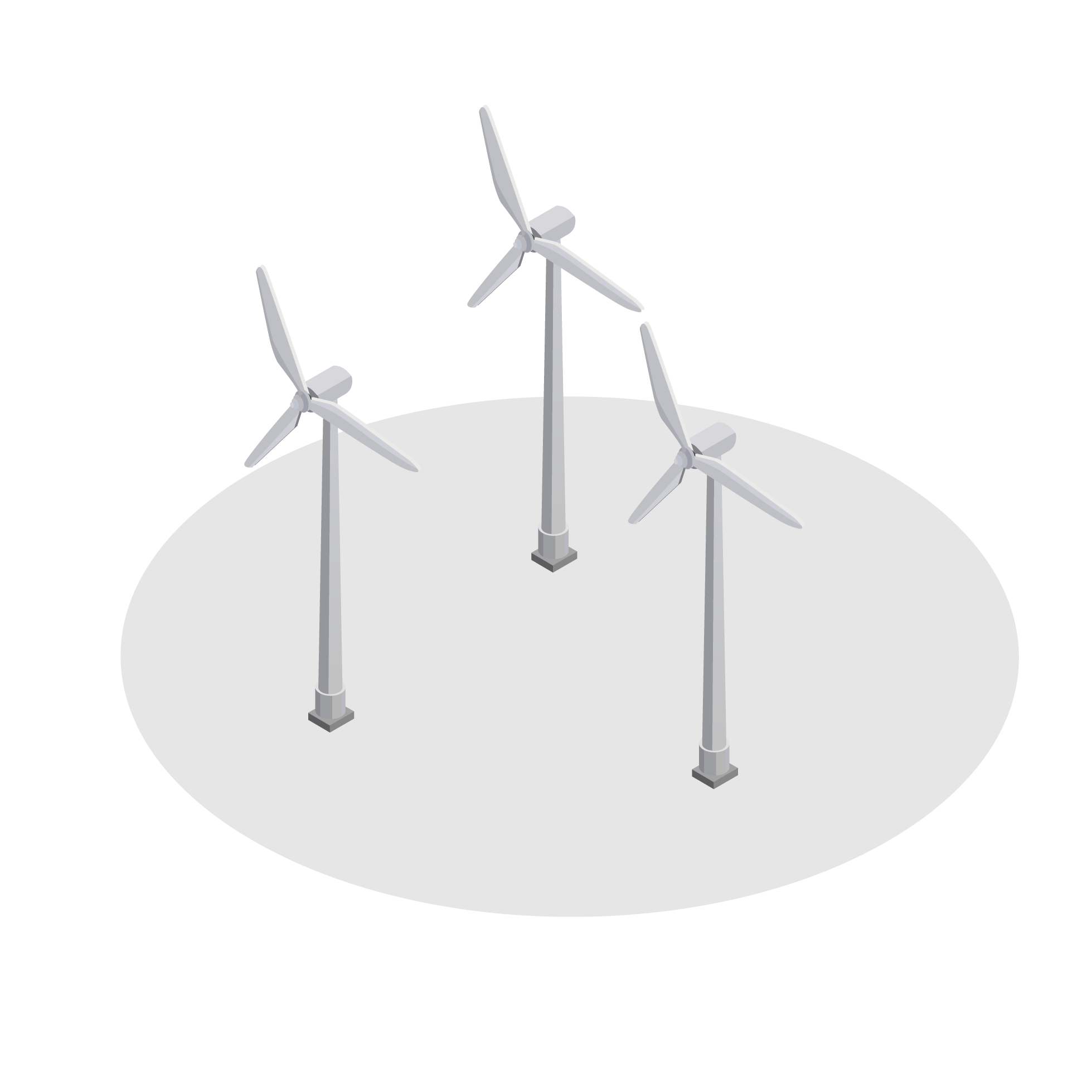
When was the last time you experienced a power cut? When I grew up in the 1970s, evening blackouts were a frequent occurrence, as was stumbling around in the dark looking for the emergency candles and some matches. Thankfully power cuts are now much rarer in industrialized nations (although 13% of the world population doesn’t have regular access to electricity at all). This is lucky. Most of us are utterly dependent on a large selection of plug-in devices that illuminate our evenings, entertain (and sometimes educate) our minds, cook our food, and clean our dishes. Most of us rely on electricity to work, to play, and increasingly to travel.
Whenever you plug one of those devices into a power socket, it’s easy to pretend that the electrical energy that flows through the wires is somehow generated from a “clean power source” such as wind, hydro, solar or nuclear.
This is a complete fantasy. Across the world, less than a quarter of electricity comes from renewable sources (wind, hydro, solar and biomass). About a tenth comes from nuclear power. More than two-thirds comes from the combustion of hydrocarbon fossil fuels (coal, natural gas and oil). Every kilowatt-hour of electricity that you consume comes at the cost of a puff of carbon dioxide that will ultimately contribute to climate change.
Of the 51 billion tonnes of greenhouse gas emissions that our species pumps into the atmosphere every year, 27% comes directly as a consequence of electrical power generation.
If we are going to avoid the worst effects of the climate emergency, the engineering community will have to use all of its ingenuity and innovation to quickly reduce that number close to zero.
In this article, we’re going to look at where our electricity comes from, how much carbon is emitted through generating it, and how many people typically die due to pollution and accidents while generating it. We also explore how engineering simulation (and test) is helping to enable a low-carbon electricity future.
Watch Stephen Ferguson
Things that turn and things that burn
Electricity is not freely available in nature, so it must be “produced”. Today 97.3% of world electricity is generated by “things that turn”, converting kinetic energy into electricity by rotating magnets past coils of wire (an electromagnetic generator). Except for solar (which provides the other 2.7%), the major difference in power generation methods depends on how that motive force used is generated.
21.1% of electricity is generated by harnessing natural forces of wind water to turn the blades of wind and water turbines. This share of electricity generation is increasing rapidly (as evidenced by the numerous wind turbine arrays that now grace our coastlines and rural landscape).
The problem with these sources is that they suffer from intermittency – they don’t produce electricity when the wind isn’t blowing, the sun isn’t shining, or water isn’t flowing quite as fast as expected.
The vast majority of electricity (73.7%) comes from “thermal power stations”. Heat energy is converted into electricity by boiling water which is forced as steam through large turbines that rotate the generators. Nuclear energy is one source of thermal power, accounting for 10.4% of electricity generated. 63.3% of all electricity generation the thermal energy is provided by “things that burn”, mainly the coal (36.7%), gas (23.5%), and oil (just 3.1%), all of which obviously produce copious amounts of carbon dioxide and nitrous oxide emissions.
Although our use of low-carbon sources is slowly increasing, our dependence on fossil fuels is actually growing. Between 2000 and 2020 fossil fuels share of energy production declined from 64.8% to 63.3%, but at the same time, overall demand increased.
More than one-third of global electricity comes from Our World in Data low-carbon sources; but a lot less of total energy does

*Includes geothermal, biomass, wave and tidal. It does not include traditional biomass which can be a key energy source in lower income settings. OurWorldinData.org - Research and data to make progress against the world's largest problems. Source: Our World in Data based on BP Statistical Review of World Energy (2020). Based on the primary energy and electricity mix in 2019.
The human cost of electricity generation
In this article, I’d like to measure the human cost of electricity production in the starkest possible terms. For each source, we’ll consider the carbon emissions caused by it and how many people typically die due to the production process, from air pollution and accidents.
To do this, we’re going to conduct a thought experiment. Imagine two small towns, one in the USA with a population of 11,000, one in the EU with 27,000. Each town would consume about 1 TWh of energy to meet all their needs for a single year. The American town is smaller because Americans on average consume much more power than Europeans (70MWh per year compared with 37MWh in 2015).
Now let’s imagine that each of those towns gets all their energy from a single local source. To provide 1TWh of electrical power, how many people in each town would die due to the production of that energy? How much carbon dioxide is emitted in generating all their electricity for a year?
Simulation is the key to low-carbon (and low-emission) electricity future
We need to stop burning fossil fuels to provide electricity. Not only are they a significant contributor to climate change, but also the pollution that they emit causes death. Unfortunately, the transition to lower-carbon electricity is not happening quickly enough. Although there has been relatively rapid growth in some renewables, the nuclear fleet is declining, and increased demand in Asia is being met through fossil fuel.
In our thought experiment, we looked at the number of deaths that would result from a European town of 27,000 people or an American town of 11,000 people. If the town’s electricity was provided only by coal, then about 25 people a year would die as a consequence.
Of course, no one gets all their energy from a single source like in the thought experiment towns. If you consider the current mix of energy sources in the EU and the US, you’d expect about 11 deaths in each town (remembering that the American town is much smaller than the European one).
If you do that calculation across the whole world – 2.17 million people die every year as a direct consequence of power generation. This is comparable with the yearly death toll from the coronavirus pandemic. This number would be much higher if everyone in the world consumed energy at the same rate as Americans or Europeans (which is the aspiration of many people from elsewhere).
Fortunately, the lowest-carbon sources of energy production are also those that cause the fewest deaths:
If we are going to avoid the worst effects of the climate emergency, the engineering community will have to use all of its ingenuity and innovation to quickly reduce that number close to zero. Engineering and test is the key to unlocking that innovation and delivering a low-carbon electricity future.
How green is green energy?
Most of us are able to access electricity with a flick of a switch. We have become dependent on electricity for everything, from powering our devices and cooking to heating and cooling. But how much of that energy is green?






